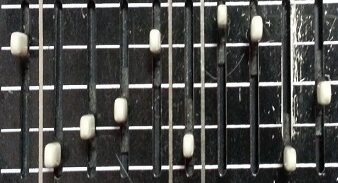– Less is more with all things equalization. If you are making big changes such as more than a 3dB raise then look to getting a better source sound. If it does not sound good going in to the processor, it will not sound good coming out. There are cases, where you do want a huge change in EQ though, if you are in sound design mode, but that is a different article. For drums, if you are doing this raise, then try a different mic, or place the mic somewhere else. Change the tuning of the drums, mute the drums more, change the sticks. Basically keep trying things until something sounds good.
– It is better to remove unwanted frequencies rather than boosting desired frequencies. In general, that is what all of the sites seem to say.
– If it is a non-bass instrument, cut the lower frequencies to keep the track from becoming too muddy. Too thick. Too much, ‘I can’t hear what is happening’.
– The reverse of this is not always true. You can really harm some of the sibilance or definition of a bass sound if you cut too much of the high end. You might want that sound effect though….
Here are some flat out tips that I have heard.
Kick Drum
– 200 to 500 kHz to remove or add box-i-ness
– 1.5 kHz to reduce how honky it might sound
– add at 80 Hz to make it sound fuller, but….. (always a butt!)
– – – The lower you go in the frequencies, the less real estate you have between instruments. If you overlap too many instruments or sounds in the same frequency space, then it will lead to muddier sounding track.
– add at 5 kHz to give it more definition
– Other tips
Vocals
- In quiet sections be very conscious of the click in the singer’s headphones. You don’t want that getting picked up in the microphone. This accidental bleed could tarnish a “lightning in the bottle” track. This leads me to……
Schedule/ Organization
- I have found it helpful when working with other musicians in my home studio, is that I have an outline of what needs to happen when. I don’t mapp everything down to the second, but before the musician shows up, I like to already know what microphone I am going to use, some thoughts on what sort of signal I want to record (DI Box, My amps, their amps, other…)
- I also mean this in the sense, of what parts of the song do I know I want them to play through. What sort of tracks or “takes” am I hoping to capture.
- Snacks, Drinks, Comfort – Having this handy is great to keep anyone focused on the music and not the rumbling in their stomach, or the dryness of their throat, etc.
— EDIT 2022-11-05 —
- Do you really want to spend 20 minutes dialing that sound in, or do you just want to:
- move the microphone?
- Tune the drum slightly different?
- Try one of many drum head treatment options…….
